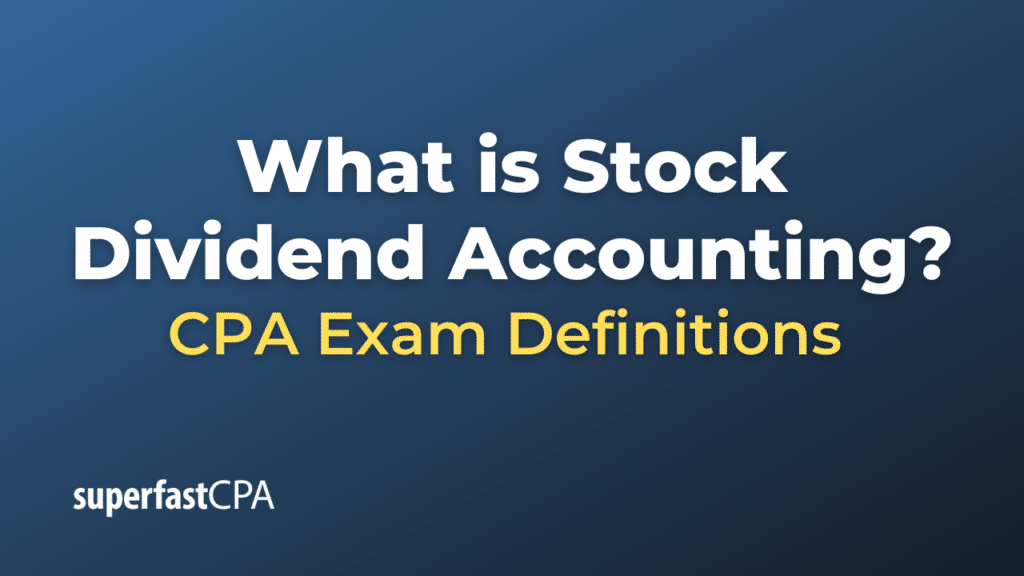Stock Dividend Accounting
Stock dividend accounting pertains to the process of accounting for dividends that are paid to shareholders not in the form of cash, but in the form of additional shares of the company. When a company declares a stock dividend, it issues additional shares to its shareholders based on their existing ownership percentages.
Here’s how stock dividend accounting works:
- Declaration Date: This is the date when the company’s board of directors declares that a stock dividend will be issued. On this date, the following journal entry is made:
- Debit Dividends (or Retained Earnings) for the total value of the stock dividend.
- Credit Common Stock Dividends Distributable for the par (or stated) value of the shares to be issued.
- Credit Paid-in Capital in Excess of Par – Common Stock for the amount by which the market value of the shares exceeds their par value (if applicable).
- Date of Distribution: This is the actual date on which the shares are distributed to shareholders. On this date, the following journal entry is made:
- Debit Common Stock Dividends Distributable for the par value of the shares distributed.
- Credit Common Stock for the same amount.
Note: If the dividend is a small percentage (typically less than 20-25%), the market value of the shares is used to calculate the dividend value. If it’s a large stock dividend, the par value is used.
Example of Stock Dividend Accounting
Let’s walk through a detailed fictional example of stock dividend accounting for a company named “TechWave Inc.”
Background:
TechWave Inc. has been experiencing substantial growth and wants to reward its shareholders. Instead of paying cash dividends, the board decides to issue a stock dividend.
Here are the relevant details:
- TechWave Inc. currently has 50,000 shares of common stock outstanding.
- The par value of the common stock is $2 per share.
- The current market price of the stock is $20 per share.
- The board decides to issue a 5% stock dividend.
Accounting for the Stock Dividend:
1. Calculate the Number of Shares for the Stock Dividend:
50,000 × 5% = 2,500 shares
2. Calculate the Value of the Stock Dividend Using Market Price:
2,500 x $20 = $50,000
3. Journal Entry on the Declaration Date:
On the date the board declares the stock dividend, TechWave Inc. will make the following journal entry:
- Debit Dividends (or Retained Earnings) for $50,000
- Credit Common Stock Dividends Distributable for $5,000 (2,500 shares x $2 par value)
- Credit Paid-in Capital in Excess of Par – Common Stock for $45,000 ($50,000 total value – $5,000 par value)
4. Journal Entry on the Date of Distribution:
When the company distributes the stock dividend to shareholders:
- Debit Common Stock Dividends Distributable $5,000
- Credit Common Stock $5,000
Outcome:
After the stock dividend, TechWave Inc. will have 52,500 shares outstanding (50,000 original + 2,500 stock dividend). The value of the shareholders’ equity remains unchanged, but there’s a shift within its components. Each shareholder now owns more shares, but the overall value of their holdings remains the same because the stock dividend dilutes the value per share.
It’s essential to understand that while stock dividends increase the number of shares, they do not provide any real value to the shareholders. Instead, they merely adjust the number of shares in circulation, potentially making them more affordable to a broader range of investors.














